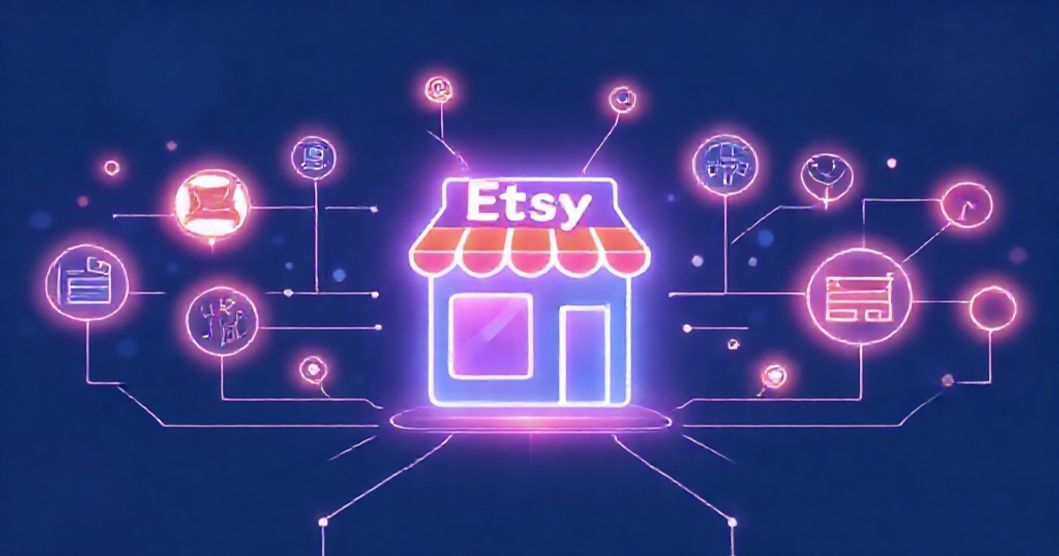In the vibrant marketplace of Etsy, sellers often seek innovative ways to optimize their operations and scale their businesses. Manually handling every aspect of an Etsy shop can become overwhelming as sales grow, necessitating smart solutions. Etsy integrations offer a powerful answer, connecting your storefront with specialized third-party software designed to automate tasks, streamline workflows, and centralize data. Understanding and implementing these tools is crucial for any seller aiming to boost efficiency, reduce administrative burdens, and ultimately foster sustainable growth within their creative venture.
What Are Etsy Integrations and Why Do They Matter for Sellers?
Etsy integrations involve connecting your Etsy shop to external applications or services that enhance its core functionalities. These connections allow data to flow seamlessly between platforms, automating processes that would otherwise require significant manual effort. For example, an integration can automatically update inventory counts, generate shipping labels, or synchronize sales data with your accounting software. The primary advantage of integrating Etsy with other tools lies in the substantial time savings and reduction in potential human error. This automation liberates sellers to focus more on product creation, marketing, and customer engagement, rather than repetitive administrative tasks.
Essential Categories of Etsy Integrations for Optimizing Operations
The landscape of Etsy integration tools is diverse, catering to various aspects of running an online business. Generally, these integrations fall into several key categories, each addressing specific operational needs. These include solutions for shipping and fulfillment, robust accounting and financial management, precise inventory control, and effective marketing automation. Furthermore, specialized integrations exist for niche areas like print-on-demand services and multi-channel selling, allowing for a highly tailored approach to business management. Strategic selection of these tools is pivotal for creating a cohesive and efficient operational ecosystem for your Etsy shop.
1. Streamlining Shipping and Fulfillment with Etsy Integrations
Efficient shipping is paramount for customer satisfaction and repeat business on Etsy. Integrating your shop with shipping management platforms automates numerous aspects of the fulfillment process. These tools facilitate bulk label creation, often at discounted commercial rates, and automatically update order statuses and tracking information on Etsy. Sellers can manage all their shipments from a single dashboard, regardless of the carrier used. For instance, an integration can save a seller hours each week by consolidating 50-100 daily orders into a few clicks for label generation and tracking updates, significantly boosting operational speed.
2. Simplifying Etsy Accounting and Financial Management
Maintaining accurate financial records is critical for any business, and Etsy shops are no exception. Accounting integrations link your Etsy sales data directly to bookkeeping software, automatically categorizing transactions, tracking expenses, and generating financial reports. This automation minimizes the risk of manual data entry errors and ensures that financial records are always up-to-date. Such tools are invaluable for tax preparation and financial analysis, providing clear insights into profitability and cash flow. For a small business, accurately tracking revenue and expenses becomes effortless, transforming complex financial tasks into manageable processes.
3. Enhancing Inventory and Order Management for Etsy Shops
Effective inventory management is vital to prevent overselling or running out of popular items. Integrations designed for inventory and order management provide real-time synchronization of stock levels across your Etsy shop and any other sales channels. When an item sells on Etsy, its quantity is automatically adjusted everywhere else. These tools also help centralize order processing, allowing sellers to view and manage all incoming orders from a unified dashboard. This capability is particularly beneficial for sellers managing hundreds of unique product variations, ensuring consistent stock availability and accurate fulfillment.
4. Leveraging Print-on-Demand (POD) Integrations for Product Expansion
Print-on-demand integrations offer an excellent opportunity for Etsy sellers to expand their product offerings without the need for upfront inventory investment. These integrations connect your Etsy shop directly to POD service providers, allowing customers to order custom-designed products like apparel, mugs, or posters. Once an order is placed on Etsy, the integration automatically sends it to the POD partner for production and direct shipping to the customer. This model significantly reduces operational overhead and risk, enabling sellers to experiment with new product lines and creative designs with minimal financial commitment.
5. Integrating Etsy with Your E-commerce Website or Other Platforms
For sellers looking to expand beyond Etsy, integrating their shop with a standalone e-commerce website or other marketplaces is a strategic move. These multi-channel integrations synchronize product listings, inventory, and order data across all platforms. This means a new product added to your website can automatically appear on Etsy, and sales from either channel update inventory universally. Such an approach maximizes reach and sales potential while maintaining consistent data management. It allows sellers to leverage the unique benefits of various platforms without duplicating effort in product administration.
Harnessing the Power of Etsy Integrations for Sustainable Growth
The strategic implementation of Etsy integrations is not merely about automating tasks; it is about building a scalable, resilient, and efficient business infrastructure. By carefully selecting and integrating tools that address specific operational needs, Etsy sellers can reclaim valuable time, reduce errors, and gain deeper insights into their performance. From streamlining shipping and simplifying accounting to expanding product lines with print-on-demand and managing multi-channel sales, these integrations empower sellers to focus on creativity and customer relationships. Embracing the right integration strategy is a definitive step towards achieving long-term success and sustained growth in the competitive Etsy marketplace.






